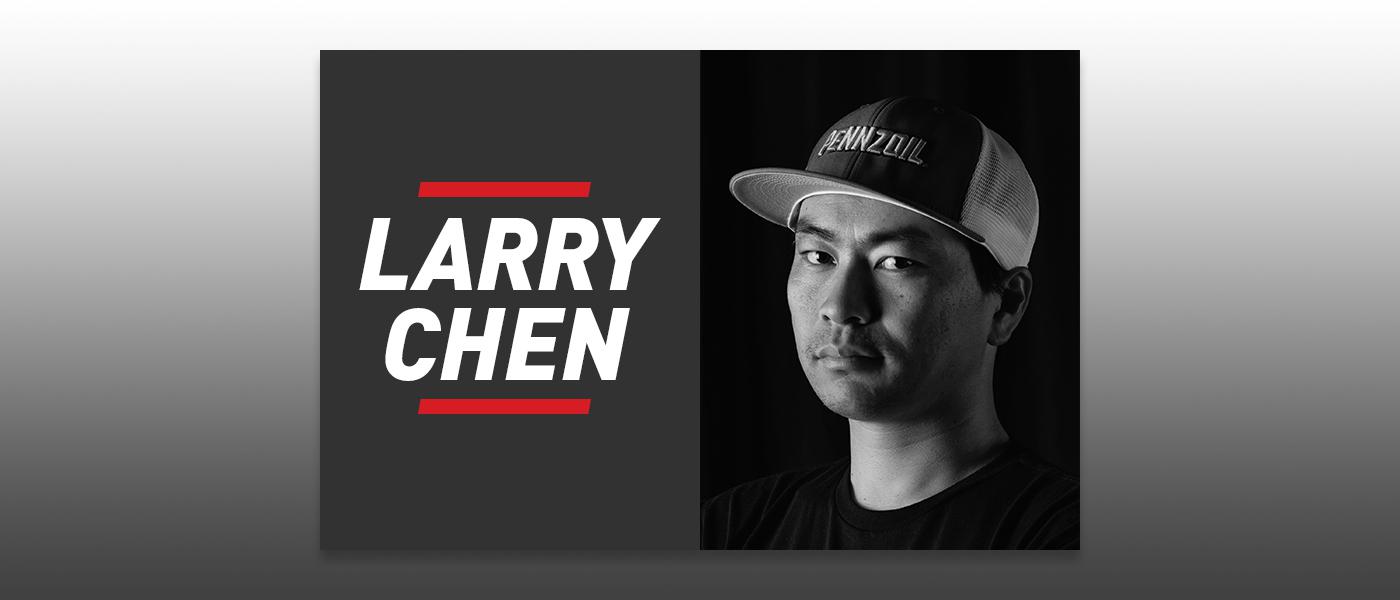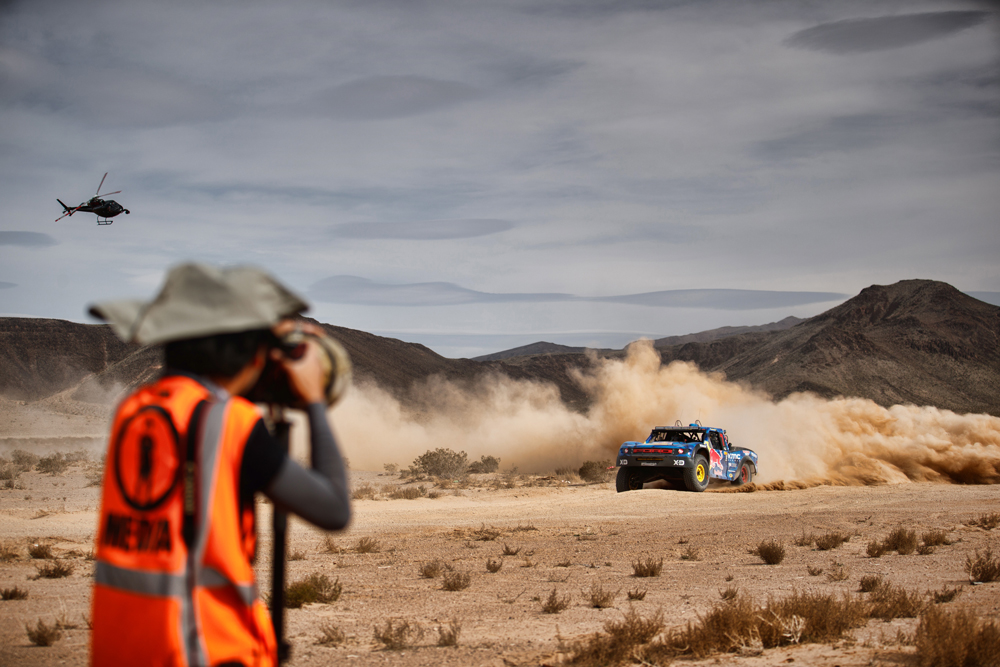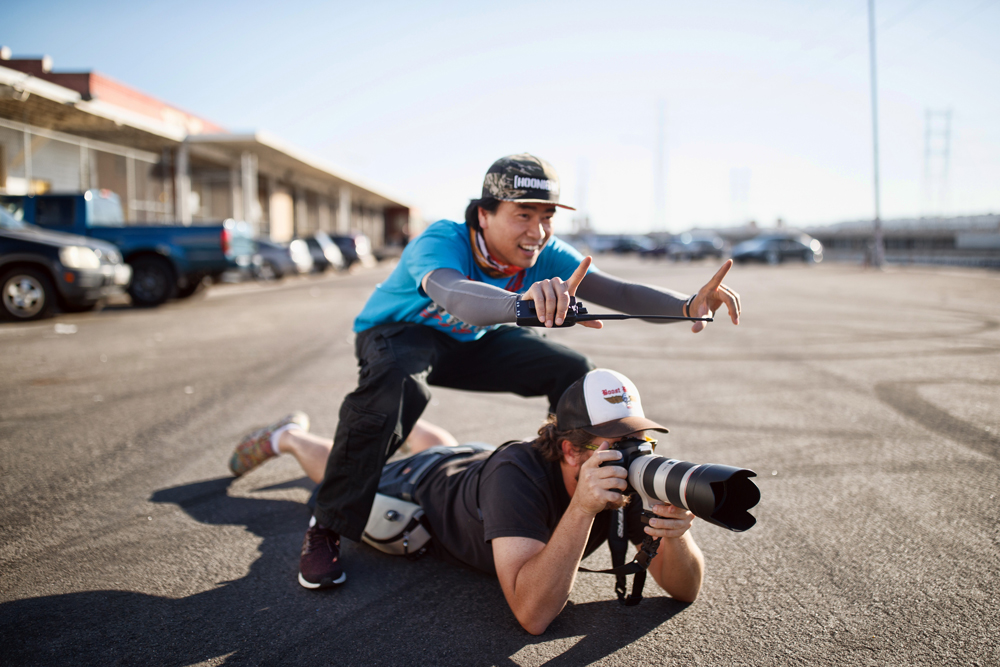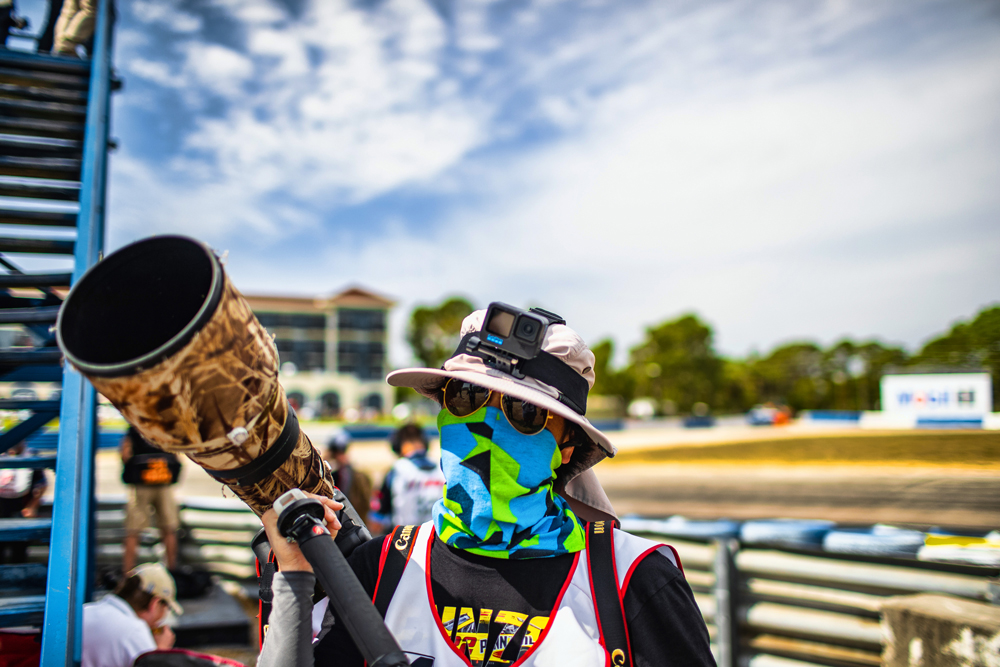Industry Insights: Larry Chen

Photographer, content creator, and ambassador for the industry, this Los Angeles-based phenom’s impact on motorsports and the automotive community goes beyond his captivating images, which earned him the title “car culture’s most influential photographer.”
Making a living as a photographer is never easy, and it’s extremely challenging if your specialty is motorsports and automotive. Most publications and teams have limited budgets, and there are always plenty of aspiring photographers who want a chance to show what they can do. To make it in this business, you have to have something special.
Larry Chen has that special talent and technical skill behind the camera. Based in Los Angeles, California, he’s been called “Car culture’s most influential photographer,” and he received the inaugural SEMA Automotive Influencer of the Year award at the SEMA Industry Awards Banquet during the 2022 SEMA Show. He has more than 830,000 followers on Instagram, and he works for some of the top teams in drifting, rally, and off-road racing, as well as doing general automotive photography. Anyone with an interest in cars and racing has seen and appreciated his work, even if they didn’t know it was his. We caught up with Chen recently to ask how he keeps himself at the top of his game.
PRI: Photography is a really tough profession. How did you get into this line of work?
Chen: It wasn’t an easy path. People ask me this question multiple times a day because for whatever reason, I guess it looks pretty glamorous from the outside! But they don’t realize the effort and the time and the years it took to get to this point. I started in 2004. I decided to start going to races and car culture events to just put my name out there and get photography done. It’s just been kind of a slow progress since then.
PRI: Was there a particular race car or event that inspired you to start shooting motorsports?
Chen: What really kicked it off for me was going to track days and playing with my car. That was the big thing that got me into it. It really started with a love for driving.

PRI: If you had the opportunity to write a letter to your younger self back in 2004, knowing what you know now, what would you say to that young man about succeeding as a photographer?
Chen: It’s tough to say because I definitely never intended on it getting to this point! I never thought it was possible. I just knew that I enjoyed doing it back then, and I still enjoy doing it now. It’s just been such a tough journey to get to this point, but I would talk about all the hours that I’ve put in, all the sacrifices that I’ve made. I still have that spark from back then, and that’s why it’s been good.
PRI: You talk about it being tough. Can you elaborate on what was tough?
Chen: It’s a lot of stuff that you don’t see on camera. I’ve been talking about my story a lot recently, whether on a podcast, or magazine interviews like this one, or on my own blog, my YouTube channel, and Hoonigan’s YouTube channel. It’s lack of sleep, lack of time with family, lack of time for anything! It’s the crazy traveling schedule and crazy conditions that we have to work with. We work in freezing cold or crazy hot. It doesn’t matter because racing happens in any condition. I’ve shot in ice storms, snowstorms, sandstorms, negative 20-degree weather. And we’ve shot in 110-, 115-degree weather. It is really, really tough. The elements come into play, but then it’s also dealing with clients and chasing payment and finding the jobs to begin with. It is so crazy. If you’re coming out of high school or college, you can’t just say, “Hey, I’m gonna become an automotive photographer.” It’s a really niche thing, and it’s a small group of us that somehow make it work, and it is worth it because it is our passion, without a doubt.
PRI: Is there any special advice that you give to people just starting out in the business?
Chen: It’s all the simple things and some of the things that people don’t really think about for whatever reason: Show up early, stay late. That’s a big thing when it comes to photography. If you’re there earlier than other photographers, you can get better shots. Then when it comes to meeting people, just be on time and be easy to work with. Don’t be a jerk because nobody wants to work with a jerk. Everybody wants to work with somebody that they like. That’s half of it for us.
Then, we spend so much time with our clients and with directors and producers. We live together sometimes for weeks at a time. So you have to try not to get on each other’s nerves. That’s so much of the battle of being able to work as a team, especially because it’s not like a normal office environment where you are in your own cubicle. Being easy to work with seems like it’s pretty hard for a lot of people. Another thing is to do whatever you can to be in front of the cool action, because when you’re sitting on the couch at home thinking about what you can shoot, you’re not out shooting and that’s a problem.

PRI: How does your photography directly or indirectly benefit the motorsports industry?
Chen: It’s about elevating a certain series or a certain type of racing. There’s a time and a place for a well-shot cell phone video or cell phone photo, but if there’s a new build, or a new race car, or a race that’s happening, you want to have your product, vehicle, race car, race series shown in its best possible light. You want it to look as good as possible and look as amazing and cool and crazy or dangerous or whatever. You want to convey whatever you’re trying to convey. You don’t want it to look bad and out of focus with the color wrong and small on the screen. You want it to be a good representation of what your product looks like in person. That’s where we come in, to show how awesome this stuff is. It’s because not everybody can travel to every single race, but they still want to see, and they want to know the story. That’s what we’re out there to do: tell the story in the best way possible.
PRI: Tell me something about a content creator like yourself that just about nobody knows.
Chen: I really, really try to always pull my weight, and it’s never just the “one and done” for me when it comes to these clients. I try to make sure they’ll call me back for the next thing that they have going on. I think that’s one of the big reasons why we’re able to survive. The stuff that they don’t see, I don’t think it really matters. It’s more about what they do see and what the end product is, and what we’re able to do to help them. I think that’s what matters.
PRI: So much is crowdsourced now, and quality often suffers as people send pictures that are just “good enough.” Do you think there’s a future for your business model?
Chen: I don’t see motorsports and car culture going downhill. It’s the biggest it’s ever been, and it’s not going to slow down anytime soon. From what I can tell, racing is also the biggest it’s ever been. There are just so many things that are going on that are elevating the whole industry. Part of it is the fact that it’s easily accessible on the media side. When I was growing up, even though there was all this racing that was happening all over the world, I just couldn’t see any of it. But now it’s so easy to see all this awesome content, and the appetite for good content is the biggest it’s ever been. So I don’t see a problem at all.

PRI: Are there any major challenges that you can see coming up in your business?
Chen: The problem that we are running into is that there’s just so much to do in the industry, and there are so many events going on every single weekend. It’s really hard for us to choose what to do because there are multiple series happening every weekend, and even new series coming out, and new events, and new car culture happenings. There’s just so much to shoot, and we always have to be careful to pick the right ones, or pick the ones that are interesting to us, or those that want to have us. It’s a good problem to have, but it still is a problem.
PRI: It sounds like you’re saying that there’s room for new photographers who want to come up and learn the craft?
Chen: One hundred percent. There is so much. There’s a lack of talent and a lack of good videographers and photographers, and even a lack of people that I would want to hire to help us. I don’t know why, and maybe part of it is because they see the glamorous side of it, but they don’t see the sacrifice and the hours and the lifestyle that we live. Maybe doing this is a casual thing for a lot of people, and that’s fine. You can be a casual content creator, but if you want to do it full-time every single day, that’s a different level.
PRI: Do you have anyone to acknowledge for giving you a big break or great advice?
Chen: There are too many to name! Off the top of my head, the general manager of PRI, Jim Liaw, was very instrumental in allowing me to practice my craft at Formula Drift for many years. He was a big, big help. And then a lot of people that I started with, back around 2004 to 2006, are the same people that I’m working with today. But now they’re working at Toyota, they’re working at Nissan, and they’re working at Ford. We’ve all grown up together, and we all still want to work together.
PRI: Was there ever a time when you were discouraged and thought, you know, this is never going to work? If so, how did you get through that time?
Chen: I run into that pretty much all the time! We’re always on the edge when it comes to a lot of things that we’re shooting, and a lot of projects that we’re working on. Some of them just don’t work out, and we have to pivot and make it work somehow. But that’s kind of the fun part of it. It’s the problem-solving that my team and I are constantly working through. After all these years of shooting, and all of the experience, you would think that we would’ve run into so many of these scenarios, but there are always new things that we’re learning about cars and car culture every single day.

PRI: Is there one aspect of photography that has been lost over the years that you would love to bring back?
Chen: The film era. I look at some of the shots that people created with film, and it blows my mind because I know as a photographer how hard it was to capture this kind of shot. It’s extraordinary, but most people won’t understand that it’s lost. I have quite the collection of film cameras, and I’ve shot a lot of motorsports and car culture with film. But as time has gone on, I find that it’s a lot more fun for me to shoot film of my family and my friends. It’s more of a hobby than what I would use as a tool, but really what’s lost when I look at those old shots is the skill. It has gotten a lot easier. But it still doesn’t distract from the fact that those existed back then.
PRI: Is there anything else to say about your business and what you do?
Chen: One of the things I say is that it doesn’t make sense why it exists, but somehow it works. This has been such a crazy journey, being able to go to all these events and travel all over the world. I’ve been to 50 countries on other people’s dimes, and I got to meet all these people and have friends all over the world. I got to experience all these car culture moments. It’s incredible.
So much of that comes from the fact that car culture is in our souls and in our blood. It’s a worldwide phenomenon. There are so many people who are into racing cars and this culture. The root of it obviously comes from transportation. We just like to move around. So it’s only natural for us to love these objects that are machines, but they convey so much emotion, and they’re beautiful, and they’re also ugly, and they’re powerful. There’s just so many aspects to it that are complicated. I’m just lucky to be a part of it, to capture this small moment in time when cars are this way.
 MEMBERSHIP LOGIN
MEMBERSHIP LOGIN JOIN PRI
JOIN PRI


